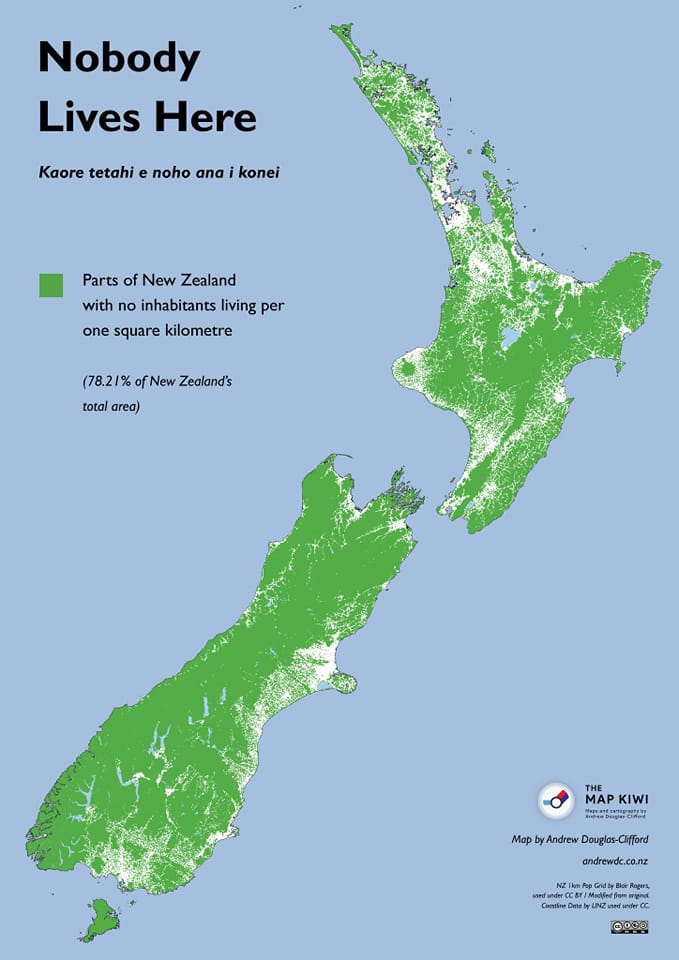Map by Andrew Douglas-Clifford
New Zealand might be famous for its stunning landscapes and adventure tourism, but here’s a mind-bending fact: nearly four-fifths of the country is completely uninhabited.
According to a fascinating map created by cartographer Andrew Douglas-Clifford, a staggering 78.21% of New Zealand has no inhabitants living per square kilometer. That’s right. Nobody lives there.
The map, titled “Nobody Lives Here” or “Kaore tetahi e noho ana i konei” in Māori, reveals the true nature of this island nation.
While we think of New Zealand as home to about 5 million people, those residents are packed into just over one-fifth of the landmass. The rest? Pure, untouched wilderness.
Why So Empty?
New Zealand’s geography tells the story. The country is dominated by rugged mountain ranges, dense native forests, volcanic plateaus, and vast conservation areas.
Much of the South Island is consumed by the Southern Alps, a formidable spine of peaks that makes permanent settlement impractical if not impossible.
Add to that the extensive national parks, protected wilderness areas, and conservation land, and you start to understand why so much remains pristine and unpopulated.
The terrain isn’t just challenging; it’s often deliberately preserved. New Zealand has one of the most comprehensive conservation systems in the world, with about one-third of its land protected in parks and reserves. These areas exist to safeguard unique ecosystems and endemic species found nowhere else on Earth.
Where Everyone Actually Lives
Look at the map and you’ll notice the white gaps clustered around coastal areas, particularly in the north. Most Kiwis live in urban centers like Auckland, Wellington, and Christchurch, or in smaller towns that dot the coasts and fertile plains. The population hugs the edges of the country, leaving the interior largely to nature.
This pattern isn’t accidental. Early Māori settlements and later European colonization both favored coastal locations for obvious reasons: access to food, trade routes, and more temperate conditions.
The interior mountains and forests offered little incentive for permanent settlement when the coasts provided everything needed.
A Different Kind of Wealth
There’s something almost romantic about this statistic. In an increasingly crowded world, New Zealand has managed to keep vast territories free from human footprints. This isn’t emptiness born of poverty or hardship; it’s a conscious relationship with land that values preservation alongside progress.
For visitors and residents alike, this means extraordinary access to wilderness. You’re never far from places where silence reigns and nature dominates. That green sea on the map represents opportunities for tramping, exploration, and solitude that few other developed nations can offer.
The map reminds us that sometimes the most valuable thing a country can offer isn’t how many people it can accommodate, but how much space it can preserve for no one at all.
Help us out by sharing this map:
